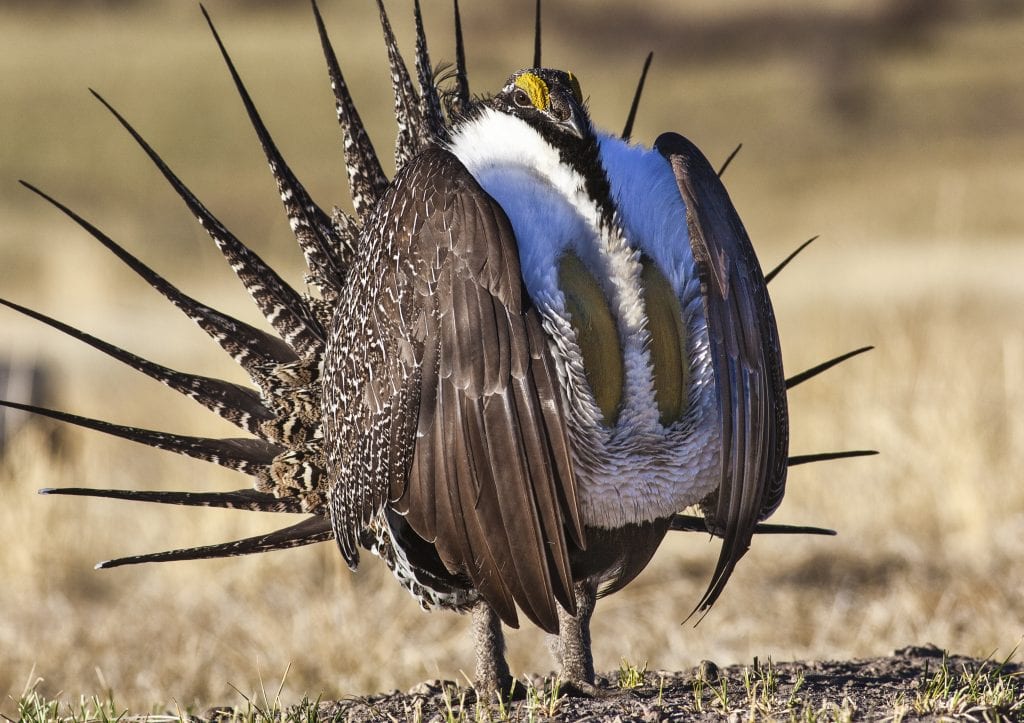Current work in wildlife, rivers, public lands, and climate
Press Releases
Upcoming sage grouse plans offer Biden Administration chance to protect dwindling species
“It’s good that the agency recognizes that the 2015 plans aren’t sufficient any longer, but it can’t do the same thing and expect different results,” said Greta Anderson, deputy director of Western Watersheds Project. “The Bureau is going to have to go further than even the most conservative alternative in order to turn the tide on sage grouse declines.”
The Biden administration has said the new plans aim to support persistent and healthy greater sage grouse populations, accounting for new information and changing conditions since the 2015 plans were completed. In March the Bureau identified the potential alternatives under consideration and this summer is expected to release a draft environmental analysis with more detail and a public comment period.
“We’ve already lost precious time watching the species circle the drain during previous attempts that were based more on politics and compromise than sound science,” said Steve Holmer of American Bird Conservancy. “These half-measures aren’t working, and the Bureau is going to have to provide for real habitat protections if it is going to save the sagebrush sea.”
“All of the action alternatives must follow the best available science, provide for consistent management across the sage grouse range, protect all remaining habitat, avoid further fragmentation, restore degraded habitat and not include “carve outs” or exceptions,” the groups’ letter said. “Conservation of the sage grouse requires regaining lost ground, not continuing to cut away at the remaining acres the bird needs to thrive for all of its life cycle needs.”
The plans also allow too many discretionary exemptions and maintain the same “disturbance cap” for surface-disturbing activities that have contributed to the birds’ ongoing decline, the groups said.
“We know what it takes to protect greater sage-grouse and their habitat,” said Joe Bushyhead, endangered species attorney with WildEarth Guardians. “It’s time for the Bureau of Land Management to implement consistent, scientifically-sound protections across the bird’s range.”
“The Biden administration needs to keep greater sage grouse off the path to extinction with strong protections based on science,” said Randi Spivak, public lands policy director at the Center for Biological Diversity. “The politics of exemptions, loopholes, delay and benign neglect has devastated these beautiful birds and the West’s remaining sagebrush landscapes. Agency officials can do the right thing and protect sage grouse habitat or they can keep pretending to do right and watch the birds keep dying out.”
Greater sage grouse once occupied hundreds of millions of acres across the West, but their populations have plummeted as oil and gas development, livestock grazing, roads, powerlines and other activities have destroyed and fragmented their native habitats.
Protecting the grouse and its habitat benefits hundreds of other species that depend on the Sagebrush Sea ecosystem. That includes pronghorns, elk, mule deer, golden eagles, native trout and migratory and resident birds. The BLM is responsible for managing about half of the nation’s remaining sage grouse habitat.

Photo by Bob Wick, BLM.